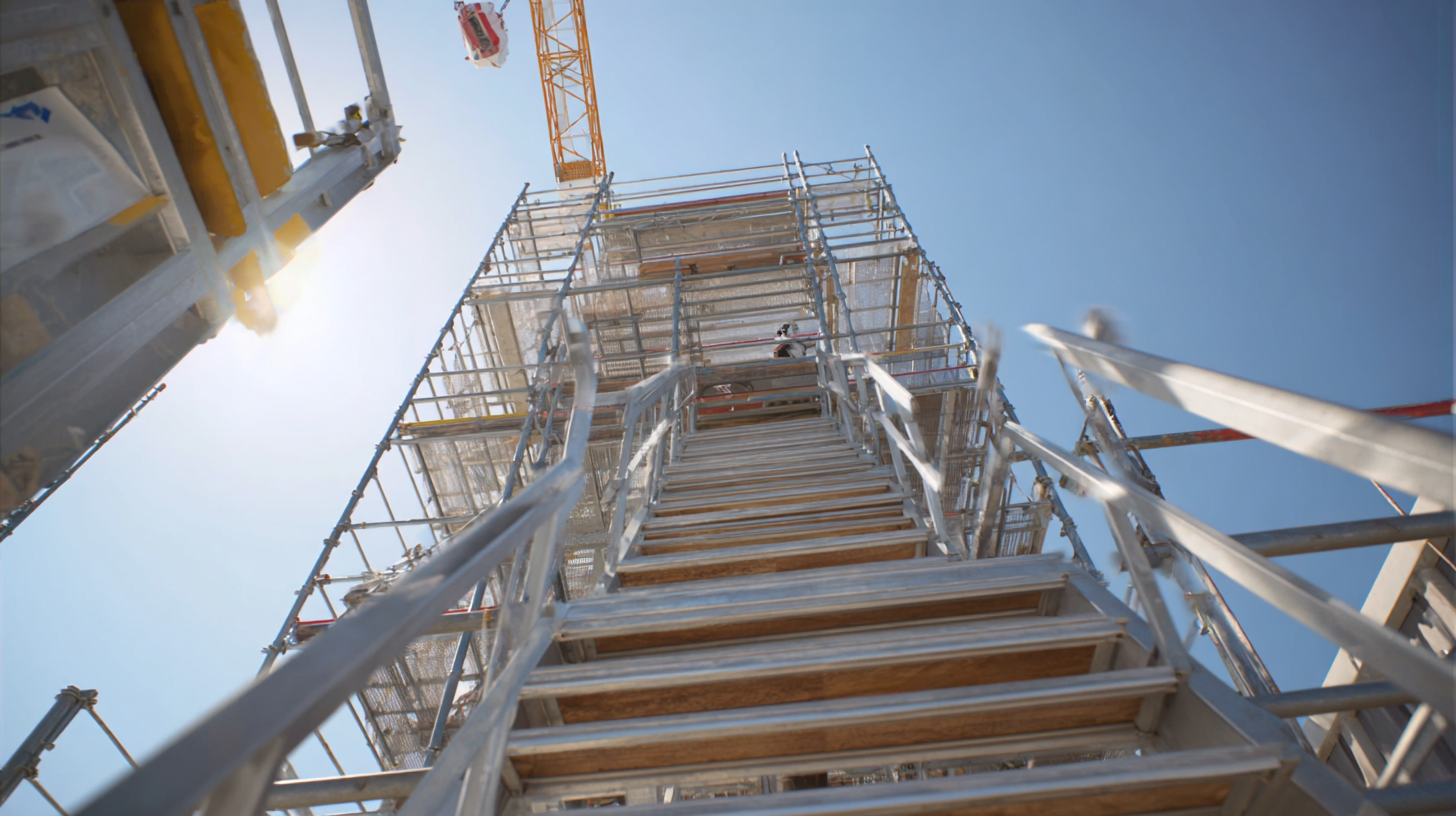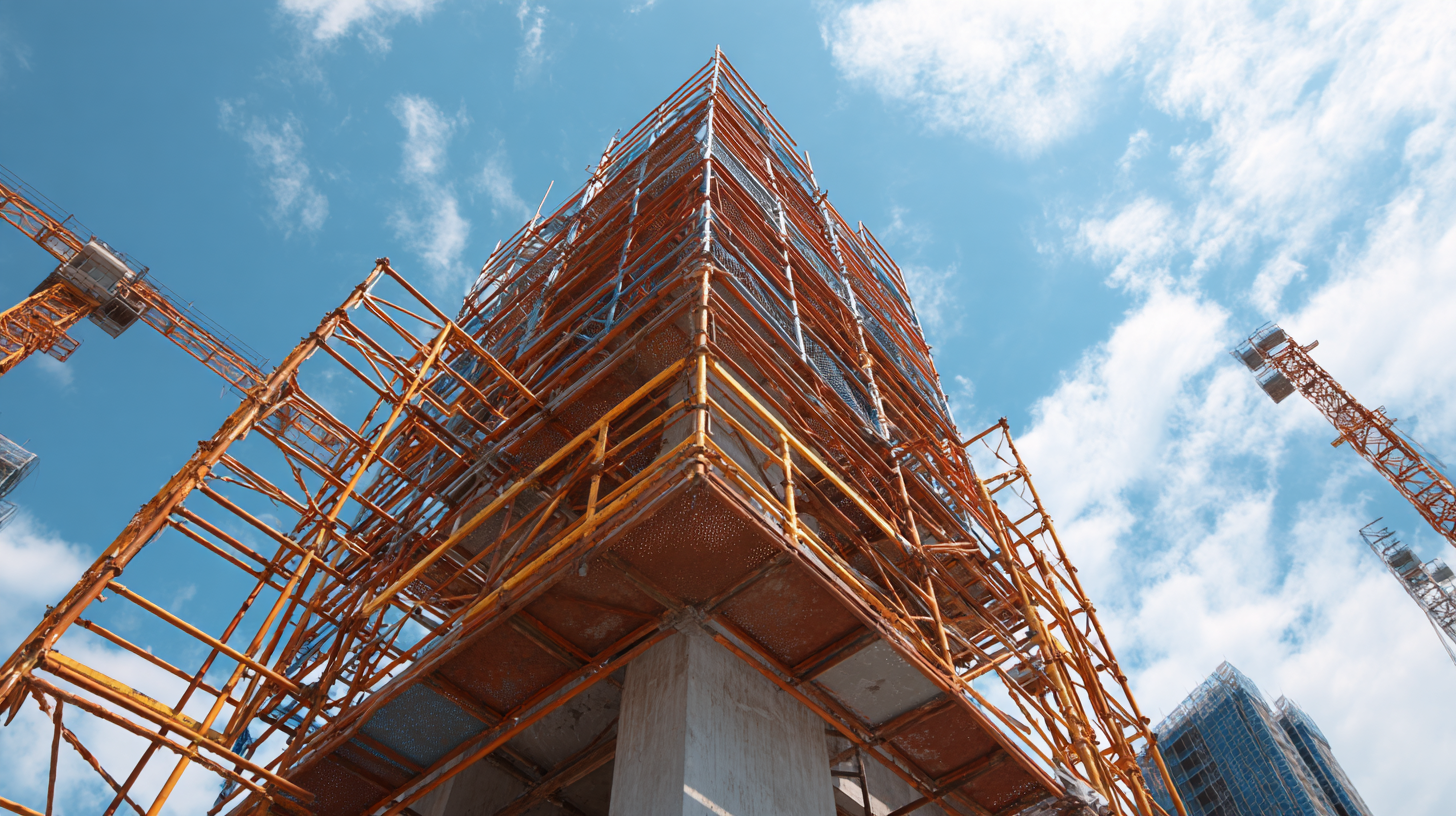Exploring the Benefits of Using Mast Scaffold in Modern Construction Projects
In the ever-evolving landscape of modern construction, efficiency and safety take center stage, prompting industry professionals to seek innovative solutions that streamline operations. One such advancement is the utilization of Mast Scaffold, a revolutionary scaffolding system designed to provide enhanced stability and flexibility on construction sites. Unlike traditional scaffolding, Mast Scaffold offers a modular approach that adapts to various project requirements, making it an invaluable asset for contractors and project managers. The integration of Mast Scaffold not only maximizes workspace accessibility but also significantly reduces assembly time and labor costs. As the construction industry continues to embrace digital technologies and data-driven strategies, understanding the multifaceted benefits of Mast Scaffold becomes essential. This article aims to explore these advantages and provide practical tips for implementing Mast Scaffold in contemporary construction projects, ensuring optimal productivity and safety for all stakeholders involved.

Understanding Mast Scaffold and Its Role in Contemporary Construction
 Mast scaffolding has emerged as a crucial innovation in contemporary construction, streamlining processes and enhancing safety on job sites. This type of scaffold is characterized by its vertical mast that provides a stable platform, allowing workers to access elevated areas with ease. Its design is not only efficient but also adaptable, making it suitable for a variety of project types, from high-rise buildings to extensive industrial facilities. By elevating work platforms high above ground, mast scaffolding mitigates the risk of falls, a common hazard in construction environments.
Mast scaffolding has emerged as a crucial innovation in contemporary construction, streamlining processes and enhancing safety on job sites. This type of scaffold is characterized by its vertical mast that provides a stable platform, allowing workers to access elevated areas with ease. Its design is not only efficient but also adaptable, making it suitable for a variety of project types, from high-rise buildings to extensive industrial facilities. By elevating work platforms high above ground, mast scaffolding mitigates the risk of falls, a common hazard in construction environments.
Furthermore, the role of mast scaffolds extends beyond just providing height; they significantly improve workflow efficiency. With the ability to move vertically and be repositioned quickly, these scaffolds minimize downtime and facilitate seamless transitions between different construction phases. Additionally, the modular design allows for quick assembly and dismantling, which is essential in meeting tight project deadlines. Ultimately, mast scaffolding embodies the intersection of safety and productivity, making it an invaluable asset in modern construction endeavors.
Advantages of Mast Scaffold: Safety Enhancements in Building Projects
Mast scaffolds have emerged as a pivotal advancement in modern construction, particularly regarding safety enhancements in building projects. A report from the Occupational Safety and Health Administration (OSHA) highlights that nearly 65% of construction site accidents are associated with falls. The introduction of mast scaffolds significantly mitigates this risk by offering a sturdy, elevated platform that can be adjusted according to the height of the building. Unlike traditional scaffolding systems, mast scaffolds integrate hydraulic lifting and vertical alignment, which not only enhances stability but also reduces the chances of worker falls.
Moreover, the adoption of mast scaffolds can improve overall efficiency on construction sites. A study published in the Journal of Construction Engineering and Management noted that projects utilizing mast scaffolds reported a 20% reduction in labor costs due to decreased setup time and increased accessibility to various work zones. This efficiency not only contributes to safer working conditions but also accelerates project timelines, ultimately leading to cost savings and enhanced productivity. By prioritizing safety and efficiency, mast scaffolds represent a transformative solution in the evolving landscape of construction methodologies.
Efficiency Boost: How Mast Scaffold Improves Workflow on Site
Mast scaffolding is increasingly recognized for its ability to enhance workflow efficiency in modern construction projects. According to a report by the Construction Industry Institute, the implementation of advanced scaffolding systems like mast scaffolds can lead to a reduction in labor costs by up to 27%. This is largely due to the system's ability to provide a more stable and accessible working platform, allowing workers to perform tasks more quickly and with less physical strain. The rapid setup and takedown processes, which can be completed in a fraction of the time compared to traditional scaffolding methods, contribute to minimizing downtime and keeping projects on schedule.

Additionally, mast scaffolds allow for better space utilization on site, enabling simultaneous work on different project levels without compromising safety. A study from the International Journal of Construction Management highlighted that projects utilizing mast scaffolding reduced work delays caused by limited access by 30%. This significant improvement in workflow not only accelerates project completion times but also enhances overall safety, as workers can operate in a more organized environment. With these efficiencies, mast scaffolding is becoming a staple in construction, reflecting the industry's shift towards smarter, safer, and more effective building practices.
Cost-Effectiveness of Mast Scaffold in Modern Construction Practice
The cost-effectiveness of using mast scaffolds in modern construction practices significantly contributes to project efficiency and budget management. Mast scaffolds, characterized by their robust vertical structures and stability, allow for extensive reach and flexibility on construction sites. This adaptability results in reduced labor costs and project timelines, as they can be quickly assembled and disassembled without compromising safety. Furthermore, their durability ensures minimal maintenance expenses, making them a financially viable option for contractors aiming to optimize operational expenditures.
In an industry projected to witness a substantial increase in scaffolding demand, with the market expected to grow from approximately $67.8 billion to $98.4 billion by 2030, mast scaffolds present a strategic investment. As construction technologies evolve, the emphasis on efficiency and safety places mast scaffolds at the forefront due to their innovative design. The initial cost may be higher compared to traditional methods, but the long-term savings from time and resource efficiency often outweigh these expenses, ultimately supporting more sustainable construction practices.
Exploring the Benefits of Using Mast Scaffold in Modern Construction Projects
This chart illustrates the cost-effectiveness of using mast scaffolds in construction projects compared to traditional scaffold solutions. The data represents average costs per project phase for various scaffolding methods.
Versatility of Mast Scaffold: Applications Across Various Construction Projects
Mast scaffolds have become increasingly popular in modern construction projects due to their remarkable versatility. These scaffolding systems can be effectively employed in various applications, including high-rise buildings, industrial facilities, and complex infrastructure projects. According to a recent report by the Global Scaffold Market Analysis, the demand for innovative scaffolding solutions like mast scaffolds is projected to grow at a CAGR of over 6% through 2025, as more contractors recognize the efficiency and safety benefits they offer.
One key advantage of mast scaffolds is their ability to support heavy loads while providing multi-level access. This feature is particularly beneficial in high-rise constructions where traditional scaffolding poses logistical challenges. Additionally, mast scaffolds can be easily adapted to fit different site requirements, making them suitable for renovation projects as well as new builds. The efficiency gained from faster assembly and disassembly reduces downtime, which can lead to significant cost savings.
**Tips:** When selecting mast scaffolds for your project, ensure that you assess the specific load requirements and work heights needed. Collaborating with experienced scaffolding specialists can also help maximize site safety and compliance with local regulations. Finally, consider investing in quality materials to enhance the longevity and durability of the scaffolding setup.
Exploring the Benefits of Using Mast Scaffold in Modern Construction Projects
| Project Type | Application | Height Reach (m) | Weight Capacity (kg) | Advantages |
|---|---|---|---|---|
| Residential Building | Facade Work | 30 | 3000 | Enhanced Safety |
| Commercial Construction | Interior Renovation | 25 | 2500 | Flexible Configuration |
| Industrial Sites | Maintenance Operations | 40 | 4000 | High Load Capacity |
| Infrastructure Projects | Bridge Construction | 50 | 5000 | Versatile Usage |
| Urban Development | High-rise Construction | 60 | 6000 | Space Optimization |
Related Posts
-

What is the Advantage of Using the Best Mast Climbing Platform for Construction Efficiency
-

A Comprehensive Comparison of Mast Climbing Work Platform Safety Features
-

7 Essential Tips for Ensuring Safety with Mast Climbing Work Platforms
-

Rising Above Tariffs How Chinese Manufacturing Thrives with Best Ansi A92 Mewp Standards
-

5 Essential Tips for Choosing the Right Mast Climbing Platform for Your Project
-

10 Essential Tips for Understanding the Latest Ansi Standards in Your Procurement Process
